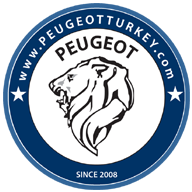|
Hello, torsion is what trying to bend a steel rod creates this flex. The logic behind the torsion axle is this: the wheels are attached to a carrier, and the carrier is attached to a steel tube called a torsion shaft. The shaft remains fixed, and the carrier overheats when the vehicle flexes around the shaft. Torsion bearings are located between these two parts to prevent friction. Over time, these bearings can seize and lock due to water ingress, lack of lubrication, etc. Once they lock, they begin to eat away at the torsion shaft they surround. Creaking noises, such as these, come from the bearing breaking down and metal rubbing against metal. If the bearing on which the vehicle is breaking down, the wheel will assume a positive camber position, while when the vehicle is lifted, it will assume a negative camber position. Similarly, when the vehicle is in the air, when we apply pressure up and down, left and right, it will slightly turn in the direction of the pressure. This is a sign that the bearings are breaking down. If we perform a torsion repair as soon as we realize the bearing has broken down, we may have a chance of salvaging the torsion shaft. The longer we delay, the more damage the torsion shaft will incur. So how does it undergo an overhaul? If there's no wear on the shaft when the torsion bar is removed, the bearing is replaced. If there is wear on the shaft, the torsion bar goes to a lathe. The lathe, either at the customer's request or to reduce costs, fills the worn shaft with welding and removes the excess on the lathe. However, with this method, the welded parts wear out again in the short term, causing the already intact bearings to deteriorate, forcing another overhaul. This shaft can be manufactured entirely from hard steel on a lathe, or you can purchase it from parts as a torsion bar. The lathe removes the old shaft and hammers the new one in. Bearings are very important; high-quality, original bearings are preferred if possible. Torsion bushings (mounts) must be replaced during a torsion bar overhaul. These mounts prevent the rear impacts of the vehicle from being transmitted to the chassis. With damaged mounts, you'll hear a disturbing thud or bang from the rear when you hit a bump. To avoid re-labor, these must also be replaced during the torsion bar overhaul. Again, the noise in torsion bars can be caused by noise. The cause is the shock absorbers. Even if the shock absorbers are intact, their bushings break and rub against the bolts holding the shock absorbers. Initially, the bushings squeak, and later on, the bushings break and fall, causing impacts and impacts. Similarly, factors such as the bolts holding the shock absorbers being installed incorrectly, loosened due to not tightening them to the desired torque, or forgotten to tighten them can also cause noises. Leaning your wheels on the curb, especially the rear wheels, and hitting potholes, bumps, etc. will damage your undercarriage. Even stopping without braking (i.e., without stopping the vehicle) while parking can damage the torsion bar in the long run. For example, let's say the handbrake grips the right wheel better than the left because the handbrake is tighter. When you apply the handbrake, there's a height difference between the good holding pad and the other side. This puts unnecessary strain on one side of the torsion bar. I don't have an idea of the price; people who have had it done recently will be able to help you.
|




